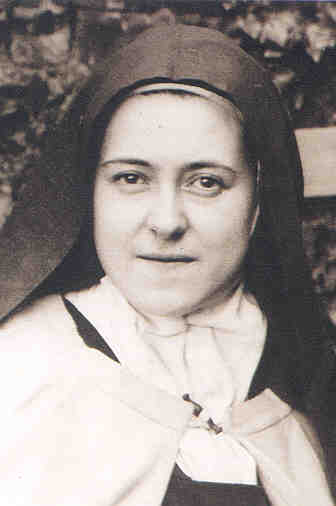 ................Thérèse
................Thérèse
SPIRITUALITY OF IMPERFECTION (part one)
Finding Strength in Weakness
By: Vilma Seelaus, O.C.D.
FIRST PUBLISHED IN SPIRITUAL LIFE IN WINTER 1998
................Thérèse
SPIRITUALITY OF IMPERFECTION (part one)
Finding Strength in Weakness
By: Vilma Seelaus, O.C.D.
FIRST PUBLISHED IN SPIRITUAL LIFE IN WINTER 1998
Two contrasting images of Thérèse situate what I call her "Spirituality of Imperfection." After her death, those who knew Thérèse recast her into expected images of sanctity. In the testimony from the process of beatification, her sister Pauline says of Thérèse "As long as I knew her, the only part of her that touched the ground was the soles of her feet". Thérèse however offers us a truer image of herself. In the Story of a Soul she tells the following incident from her childhood:
I wanted an inkstand which was on the shelf of the fireplace in the kitchen; being too little to take it down, I very nicely asked Victoire (the maid) to give it to me, but she refused telling me to get up on a chair. I took a chair without saying a work but thinking she wasn't too nice; wanting to make her feel it, I searched out in my little head what offended me the most. She often called me a "a little brat" when she was annoyed at me. So before jumping off my chair, I turned around with dignity and said: "Victoire, you are a brat!'. Then I made my escape, leaving her to meditate on the profound statement I had just made. (A, p.391)1
Despite stories of her "angelic eyes" and otherworldly holiness, Thérèse best exemplifies the presence of God to human life in its seemingly unholy details.
Jerome Dollard claims:
spirituality is a lot like health. We all have health; we may have good health or poor health, but it's something we can't avoid having. The same is true of spirituality; every human being is a spiritual being. The questions not whether we 'have spirituality' but whether the spirituality we have is a negative one that leads to isolation and self-destruction or one that is more positive and life-giving.2
A positive spirituality leads us to the fullness of ourselves as God-related-human beings.
When we think of Thérèse we think of a specific kind of spirituality - her Little Way. It is a way of trust and absolute surrender to God's intimate presence. Scripture is her source and inspiration. Three texts in particular bring into focus the heart of Thérèse's doctrine: "Whoever is a little one, let them come to me." Proverbs, 9:4 "For to the one that is little, mercy will be shown." Wisdom 6:7 "As one whom a mother caresses, so will I comfort you; you shall be carried at the breasts, and upon the knees they shall fondle you." Isaiah 66:12-13
In a prayer to Christ, Thérèse sums up her spirituality for us:
"O Jesus! Why can't I tell all little souls how unspeakable is Your condescension? I feel that if You found a soul weaker and littler than mine, You would be pleased to grant it still greater favors, provided it abandoned itself with total confidence to Your infinite Mercy. I beg You to cast Your Divine Glance upon a great number of little souls. I beg You to choose a legion of little Victims worthy of Your LOVE!" (B, p.200)
Thérèse speaks a language of littleness. Would anyone today use such diminutive language to describe their aspirations in life? What, if anything, can littleness mean for us today in a culture where little children are often not valued and where power is prized above integrity? What particular meaning has Thérèse's Little Way for us whose lives are so different from hers?
The use of diminutives was part of Thérèse's world and is an echo of the family circle in which Thérèse remains the "little sister." Her language of littleness discloses profound theological meaning for human life. In her Story of a Soul, Thérèse reveals the transformation in herself which leads to her Little Way and to the meaning sustained littleness begins to have as she matures in the spiritual life.